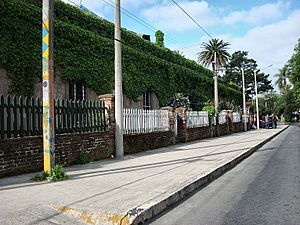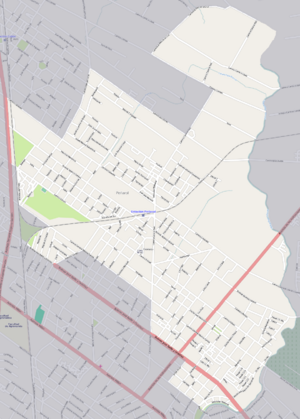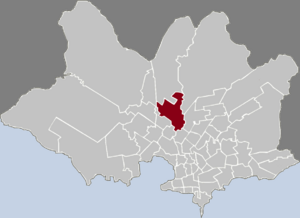Peñarol, Montevideo facts for kids
Quick facts for kids
Peñarol–Lavalleja
|
|
|---|---|
|
Barrio
|
|

Historic workers residences of the railroad company
|
|

Street map of Peñarol–Lavalleja
|
|

Location of Peñarol–Lavalleja in Montevideo
|
|
| Country | |
| Department | Montevideo Department |
| City | Montevideo |
Peñarol, also known as Peñarol–Lavalleja, is a lively neighborhood in Montevideo, Uruguay. It is a place where many families live and work.
This area has grown a lot over the years. On March 10, 1913, Peñarol was officially called a "pueblo," which means a village. Later, on July 1, 1953, it became a "villa," or a town. Since then, it has become a part of the big city of Montevideo.
Where Did the Name Peñarol Come From?
The name Peñarol has an interesting story! Long ago, in 1776, a man named Giovanni Battista Crosa came from a town called Pinerolo in Italy. He opened a small grocery store in this area.
People started calling the place by the name of his hometown, Pinerolo. Over time, the name changed a little in how people said it. It slowly became known as Peñarol, which is the name we use today.
Places to Visit
You can find the Parish Church of St. Joseph, Husband of Mary in Peñarol. It is a Roman Catholic church located on Av. Instrucciones 1343.
Sports in Peñarol
Peñarol is famous for its sports club, Club Atlético Peñarol. This club is also known by its cool nicknames like Carboneros, Aurinegros, and Manyas.
While the club has played other sports like basketball and cycling, it is best known for its amazing football (soccer) team. The football team is incredibly successful. They have never been moved down from the top league, which is a huge achievement!
See also
 In Spanish: Peñarol (barrio) para niños
In Spanish: Peñarol (barrio) para niños
- Barrios of Montevideo

